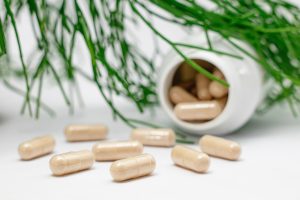Best Yoga Exercises For Mindfulness
 Mindfulness is an awareness of the present moment, leaving the past in the past and not fretting on the future. Many yoga exercises and breathing techniques promote mindfulness. Those poses—asanas—and techniques also build strength, flexibility, balance, and endurance. The physical movements during yoga provide the same benefits as all exercises. Increasing focus and relaxation improve brain functioning.
Mindfulness is an awareness of the present moment, leaving the past in the past and not fretting on the future. Many yoga exercises and breathing techniques promote mindfulness. Those poses—asanas—and techniques also build strength, flexibility, balance, and endurance. The physical movements during yoga provide the same benefits as all exercises. Increasing focus and relaxation improve brain functioning.
Mindfulness affects the body positively.
Learning mindfulness through yoga can extend to other areas of your life. It can reduce stress, slow brain aging, improve well-being, lower anxiety, aid depression, and benefit weight loss efforts and the quality of life. Mindful eating slows food consumption and gives the stomach time to signal the brain it’s full before you overeat. You enjoy the food more because you savor the flavor, appreciate the texture, and make each bite an experience. It aids digestion and causes you to eat less,
One form of yoga is mindful yoga.
In traditional yoga, the primary goal is achieving the correct movements for each pose. Mindfulness acts as an aid to reaching the goal. Mindful yoga reverses the two. You use the poses to achieve mindfulness. The difference is all about the primary objective. Mindful yoga focuses on bringing the mind into the present. It relieves stress, reduces anxiety and depression, and improves pain relief. Your awareness is on the body, feelings, mind, and worldly ways or dharma.
Start with deep breathing exercises and the easy pose.
Belly breathing is often the first breathing technique used in yoga, but there are many others. Sit in the easy pose—Sukhasana asana. It’s the most basic seated posture. Sit with your legs extended and back straight. Widen your knees as you cross your legs at the shins. Slide your feet up with each foot under the opposite knee, leaving a space between the pelvis and the feet. Put your hands on your knees and look forward as you clear your mind with the breathing technique.
- The lotus, half-lotus, cow face, and eagle poses are mindful poses used for deep breathing. They are meditative movements. Beginners should choose the one they can do best and work toward the others.
- Yin yoga is another type of yoga that focuses on mindfulness. It’s slower and more focused than other yoga. It starts seated with the feet folded and on top of the opposite thigh, bending the body forward.
- A difficult pose that promotes mindfulness is the stork or tree pose—the vrikshasana. You shift your weight to your left leg. Lift the right leg and place the sole of your foot on your inner left thigh while focusing on each minor movement.
- The child pose is often used for relaxation and increasing mindfulness. You can use almost any pose to develop mindfulness by focusing on the present.
For more information, contact us today at Rising Fitness Gym



 Whether bedridden, chairbound, or using crutches, reduced mobility doesn’t eliminate the need to exercise. Reduced mobility can be due to frailty, balance issues, or other physical problems. It doesn’t why you have limited movement, exercising is vital. If the situation is temporary, maintaining your endurance and muscle mass speeds recovery and back to your active lifestyle. Whether temporary or permanent, exercise helps you stay healthier and improves your endurance and self-reliance. Never start an exercise program without checking with your healthcare professional.
Whether bedridden, chairbound, or using crutches, reduced mobility doesn’t eliminate the need to exercise. Reduced mobility can be due to frailty, balance issues, or other physical problems. It doesn’t why you have limited movement, exercising is vital. If the situation is temporary, maintaining your endurance and muscle mass speeds recovery and back to your active lifestyle. Whether temporary or permanent, exercise helps you stay healthier and improves your endurance and self-reliance. Never start an exercise program without checking with your healthcare professional.
 Eggs are an inexpensive source of protein and chock-full of nutrients. Go to any restaurant in Houston, TX, and you’ll find a variety of egg dishes on the menu. They’re nutrient-dense and low-calorie. You can eat them at every meal. Unfortunately, eggs suffer from bad PR and inaccurate science. There are myths about the dangers of eating too many eggs and how they negatively affect your health. Nothing could be further from the truth.
Eggs are an inexpensive source of protein and chock-full of nutrients. Go to any restaurant in Houston, TX, and you’ll find a variety of egg dishes on the menu. They’re nutrient-dense and low-calorie. You can eat them at every meal. Unfortunately, eggs suffer from bad PR and inaccurate science. There are myths about the dangers of eating too many eggs and how they negatively affect your health. Nothing could be further from the truth.
 Food journals are helpful in several situations. If you’re trying to shed a few extra pounds, it can be eye-opening. You’ll be more aware of what you eat and when you eat so you can take steps to prevent it. If you’re constantly having digestive issues or other health issues and the doctors are stumped, a food journal can help. Add extra information to get the results, such as how you feel. You can make your food journal simple with just the food you eat.
Food journals are helpful in several situations. If you’re trying to shed a few extra pounds, it can be eye-opening. You’ll be more aware of what you eat and when you eat so you can take steps to prevent it. If you’re constantly having digestive issues or other health issues and the doctors are stumped, a food journal can help. Add extra information to get the results, such as how you feel. You can make your food journal simple with just the food you eat.
 Eating after 8 pm has always been discouraged by healthcare professionals in Houston, TX. There are valid reasons. Another school of thought says having a snack later in the evening or before bed might be beneficial. Some people need the boost from eating carbs before bedtime, or they can’t sleep. That doesn’t mean eating a big meal, just something light. It’s a survival instinct. If our distant ancestors had an empty stomach, they stayed awake to hunt for food so they didn’t starve. Eating a snack can avoid insomnia.
Eating after 8 pm has always been discouraged by healthcare professionals in Houston, TX. There are valid reasons. Another school of thought says having a snack later in the evening or before bed might be beneficial. Some people need the boost from eating carbs before bedtime, or they can’t sleep. That doesn’t mean eating a big meal, just something light. It’s a survival instinct. If our distant ancestors had an empty stomach, they stayed awake to hunt for food so they didn’t starve. Eating a snack can avoid insomnia.
 Who doesn’t love dessert? Some people would start their meal with dessert to make sure they have room for it. Others have a dessert with every meal. Having a dessert can be part of a healthy eating plan and even part of a diet. You have to stick with the accepted portion size. If you’re eating cake, 1/12th of the cake, not the whole cake, is the right portion. Make your dessert lower in calories, such as eating fresh fruit sorbet instead of a mud pie or brownie sundae.
Who doesn’t love dessert? Some people would start their meal with dessert to make sure they have room for it. Others have a dessert with every meal. Having a dessert can be part of a healthy eating plan and even part of a diet. You have to stick with the accepted portion size. If you’re eating cake, 1/12th of the cake, not the whole cake, is the right portion. Make your dessert lower in calories, such as eating fresh fruit sorbet instead of a mud pie or brownie sundae.
 Historically, women have worked in the fields and at other difficult manual labor tasks when pregnant. They had no choice. Their survival and their family’s survival depended on it. Was it safe? Many tasks they did were, even though we’d call them an intense workout, by today’s standards. They continued to do what they always did before they became pregnant, but we don’t live like that anymore. Doctors usually recommend you continue to exercise if you did it before pregnancy. If you’ve never exercised, start slowly and don’t push yourself. Taking the advice of your healthcare professional should be the top priority.
Historically, women have worked in the fields and at other difficult manual labor tasks when pregnant. They had no choice. Their survival and their family’s survival depended on it. Was it safe? Many tasks they did were, even though we’d call them an intense workout, by today’s standards. They continued to do what they always did before they became pregnant, but we don’t live like that anymore. Doctors usually recommend you continue to exercise if you did it before pregnancy. If you’ve never exercised, start slowly and don’t push yourself. Taking the advice of your healthcare professional should be the top priority.
 It’s more common to find people in Houston, TX, keeping a health journal as new people move in and the city grows. A health journal makes it easier to change doctors and is invaluable if something happens that you can’t communicate with others. Your medical history is ready for anyone who needs to know the information that might save your life. It can offer clues to identifying an elusive illness, by providing the symptoms you’ve experienced but might not remember during your visit.
It’s more common to find people in Houston, TX, keeping a health journal as new people move in and the city grows. A health journal makes it easier to change doctors and is invaluable if something happens that you can’t communicate with others. Your medical history is ready for anyone who needs to know the information that might save your life. It can offer clues to identifying an elusive illness, by providing the symptoms you’ve experienced but might not remember during your visit.
 It’s summer. The hunt for the elusive flat tummy starts again. The microwear of summer turns up the intensity of the search. Two things can help diet and exercise. A healthy diet helps in two ways. It can help you lose subcutaneous and visceral fat. You can also focus on foods to avoid and ones that help you achieve your goal to have abs you’ll be proud to show off.
It’s summer. The hunt for the elusive flat tummy starts again. The microwear of summer turns up the intensity of the search. Two things can help diet and exercise. A healthy diet helps in two ways. It can help you lose subcutaneous and visceral fat. You can also focus on foods to avoid and ones that help you achieve your goal to have abs you’ll be proud to show off.
 It used to be easier when you looked for supplements. There were a few protein supplements, bottles of multivitamins, and some individual vitamins. Today, there are fiber bars, Elderberry gummies, and a vast array of protein supplements containing extra nutrients, including dried fruits and vegetables. It’s become a million-dollar business. Sometimes, the supplement is a waste and flushes out of your body. People with adequate vitamin C expel excess vitamin C in urine. Some vitamins or macronutrients are dangerous in large doses. Taking supplements may help or come with problems.
It used to be easier when you looked for supplements. There were a few protein supplements, bottles of multivitamins, and some individual vitamins. Today, there are fiber bars, Elderberry gummies, and a vast array of protein supplements containing extra nutrients, including dried fruits and vegetables. It’s become a million-dollar business. Sometimes, the supplement is a waste and flushes out of your body. People with adequate vitamin C expel excess vitamin C in urine. Some vitamins or macronutrients are dangerous in large doses. Taking supplements may help or come with problems.